MONTANA
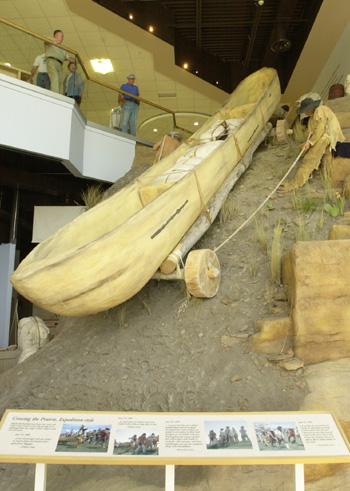
GREAT FALLS
After our "Sextants to Satellites" expedition in Salmon, we wanted to see more
about the Lewis and Clark expedition and thought that the interpretive center in Great
Falls would be a good place to go. It was well worth the effort, as the exhibits
are excellent, and provide a very informative and complete view into what Lewis &
Clark and the Corps of Discovery accomplished.
Great Falls is also the site of the 18 mile "Portage" around
the five falls. The falls have been reduced to a trickle by the dams and the drought,
so when viewing them you must use your powers of imagination to a great extent.
All in all, the visit is worth while, even if you can't see it as Lewis and Clark did.
The picture is what the Great Falls looks like today. With the dams holding back the
water, it is hard to imagine what they looked like to the Corps of Discovery.
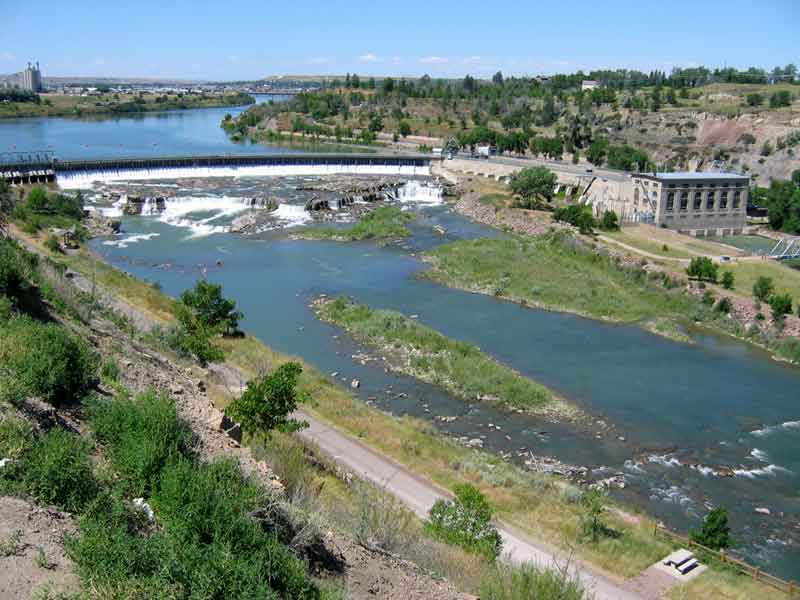
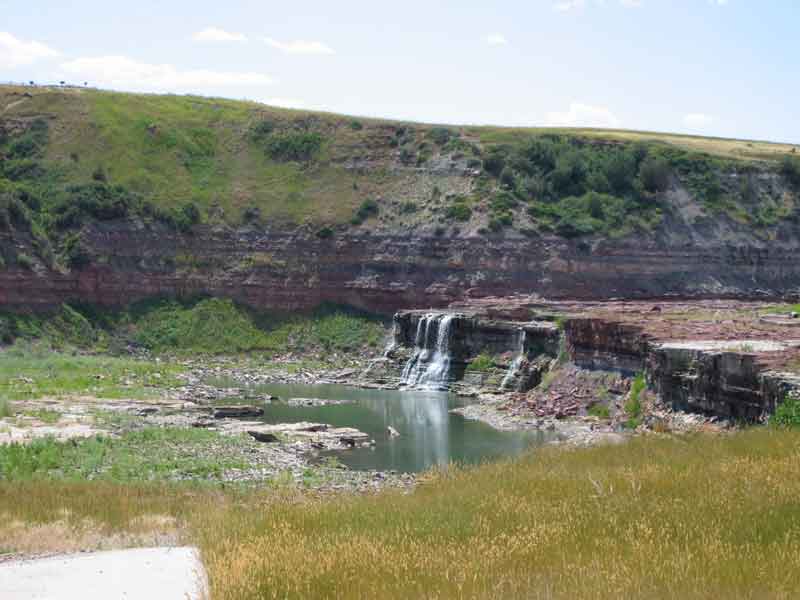
Left: Black Eagle Falls, the farthest upstream that had to be portaged.
Right: Rainbow Falls
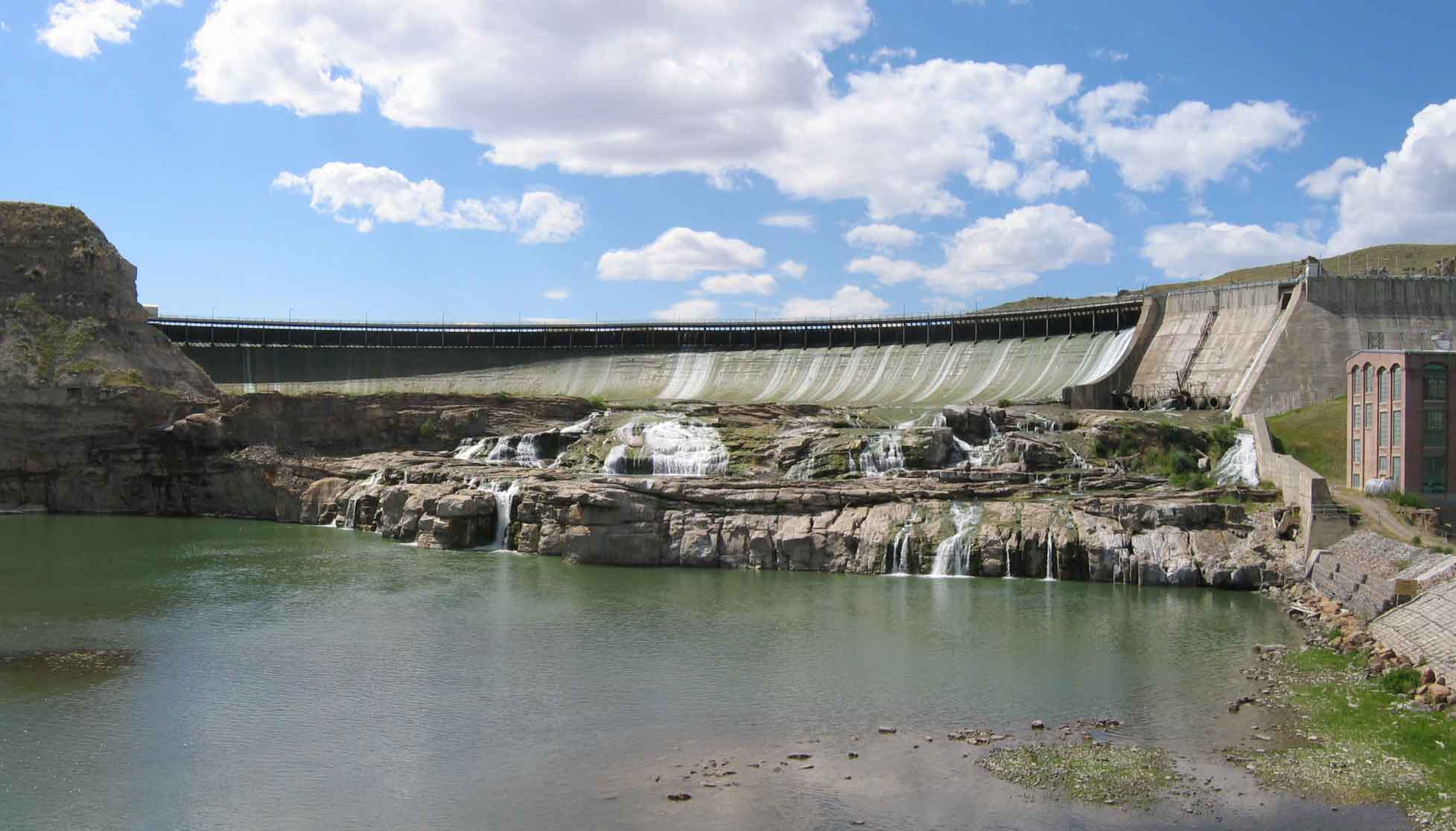
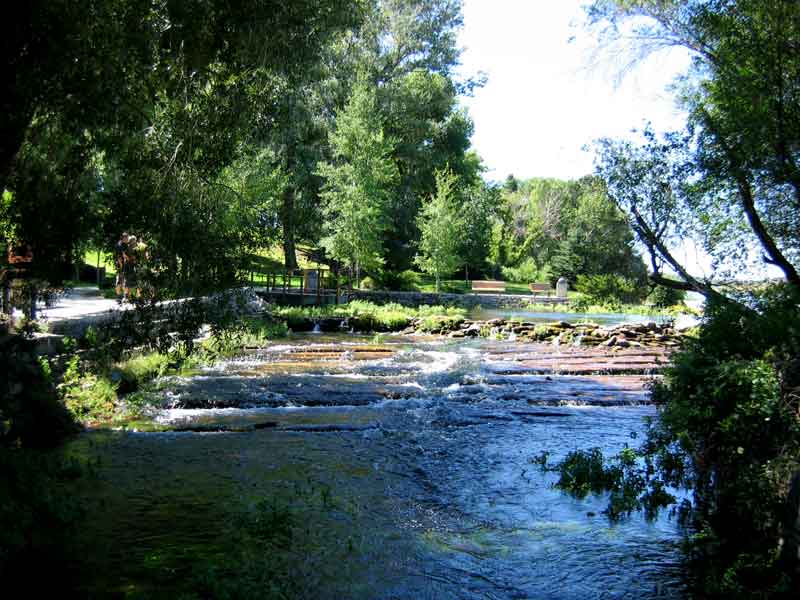
Left: The Great Falls
Right: Giant Springs on the bank of the Missouri - Flows at a rate of 134,000 GPM
and was observed by L&C.
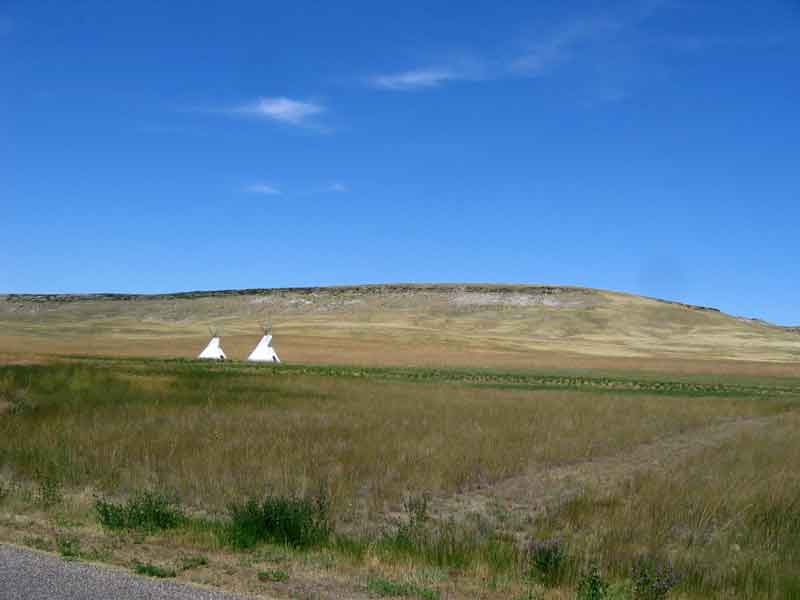
ULM PISHKUN
A "Pishkun" is a buffalo jump. The local indians used to harvest buffalo by running
them off a high cliff. Those buffalo that "jumped" were killed and then used by
the indians for food and shelter. The indians could not exist without the buffalo,
as they used the hide for clothing and shelter and the meat as food. In fact almost
the entire buffalo was used to provide many of the necessities of life for the
indians.
The picture is the Ulm Pishkun just south of Great Falls. It is a State Park with
an exhibit that explains the Pishkun and many of the associated activities of the
indians and their dependency on the buffalo.
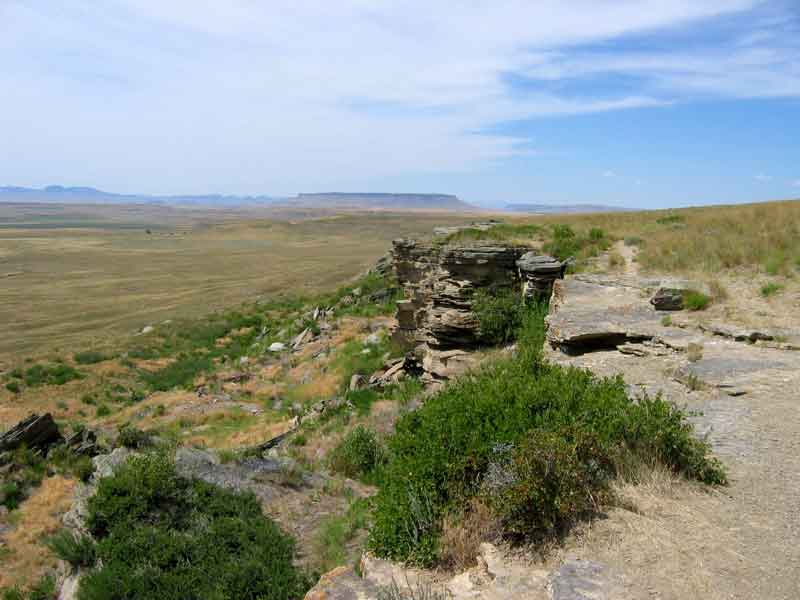
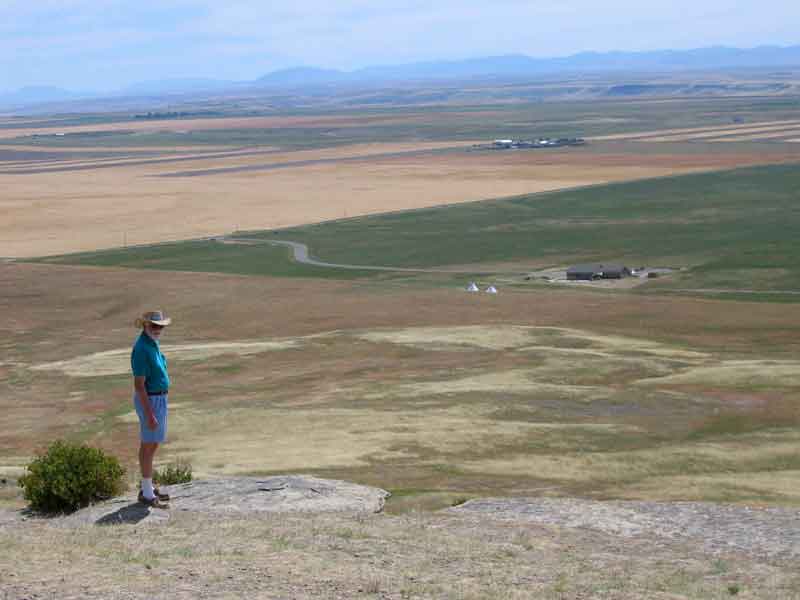
Left: This is the top of the pishkun where the buffalo were forced to jump.
Right: Looking back down to the Visitors Center. The reverse of the picture above.
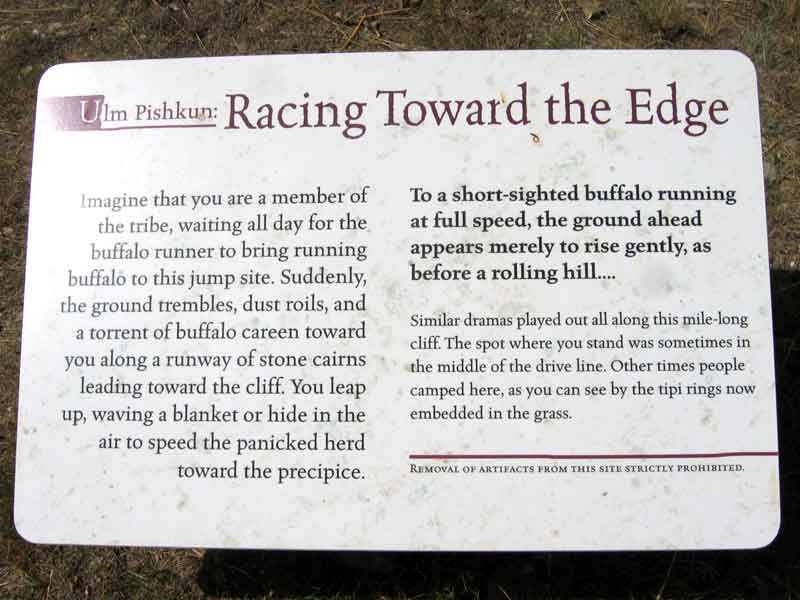
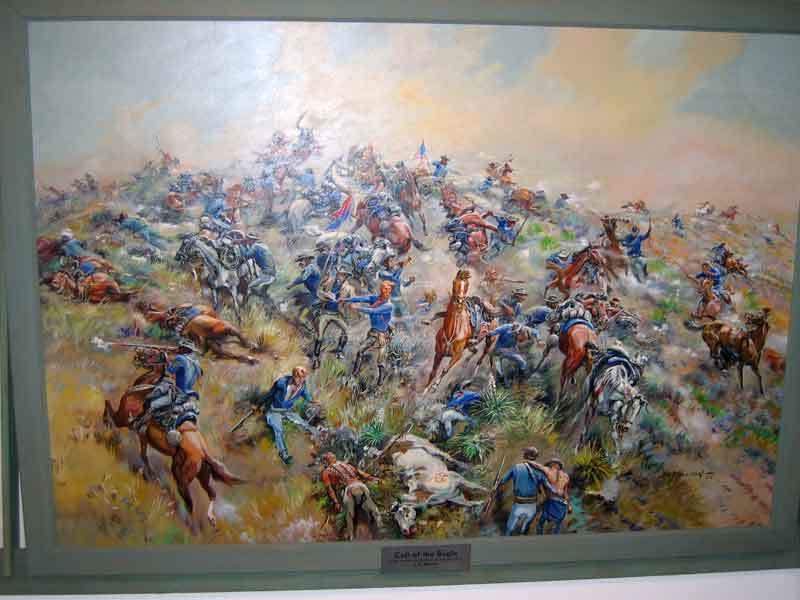
LITTLE BIGHORN
We camped in Hardin and visited the site of the Little Bighorn Battlefield. This is
where Custer fought the Lakota and Cheyenne in the Battle of the Little Bighorn (aka
"Custer's Last Stand"). This site is a US National Monument and is very well done
and also very popular, judging by the number of visitors. There are ongoing talks that
give a rather good understanding of the whys and hows of the battle.
The entire battlefield has been excavated and documented by several teams of archeologists.
You can roam around the several miles of the site and find tablets showing what happened
to who and how it related to the overall battle. This exhibit is very informative as to
what actually happened and why Custer's attack on the indians resulted in a counter
attack that wiped out his entire force.
The picture to the right is of a painting called "Call of the Bugle" and shows
Custer and his men at their "Last Stand" in the area near the top of the ridge
shown in the picture to the left below.
The bodies of over 220 participants of the battle are buried around the monument
seen at the top of the hill.
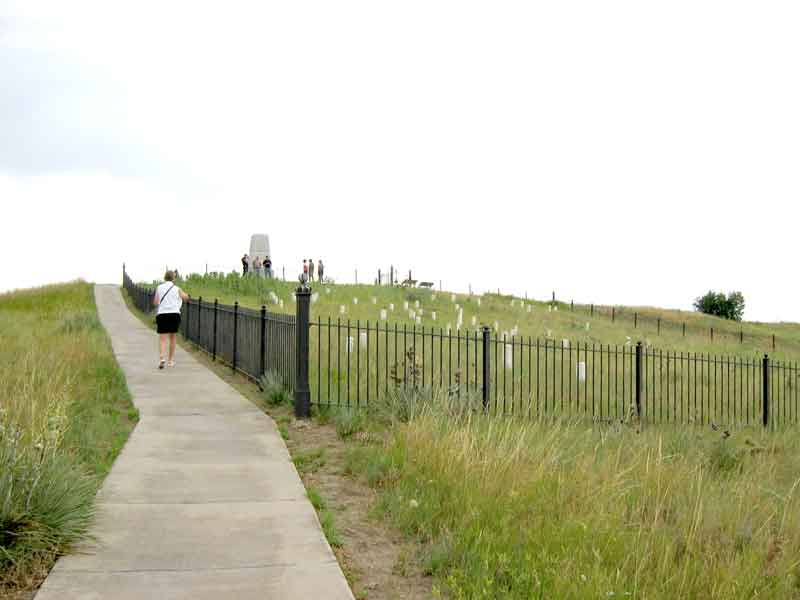
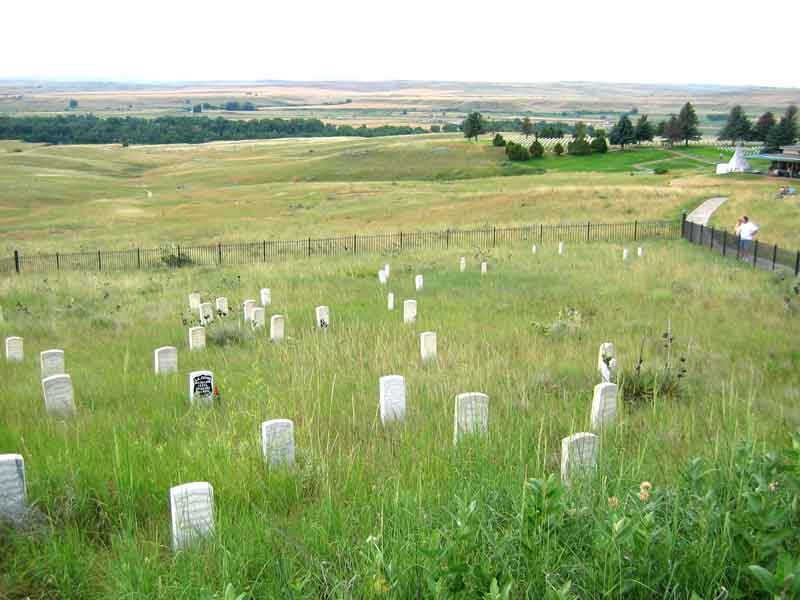
Left: Site of the final battle depicted in the painting above.
Right: Markers showing where individuals were found. The Black faced marker is Custer's.
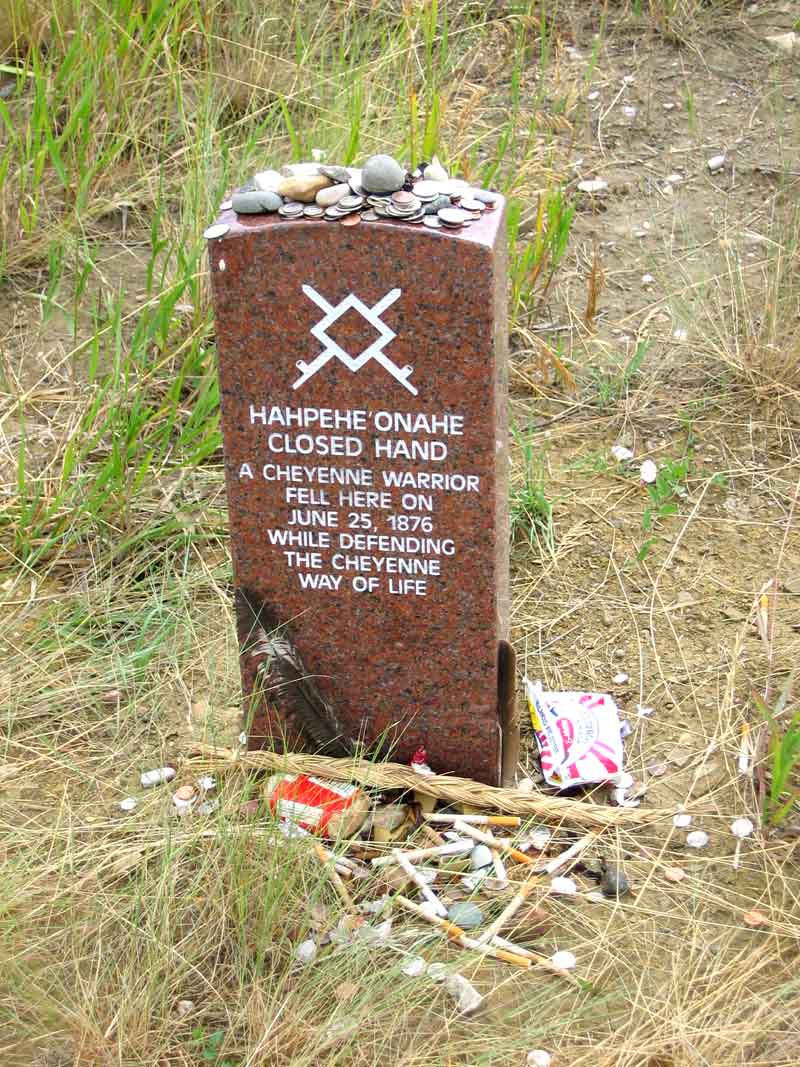
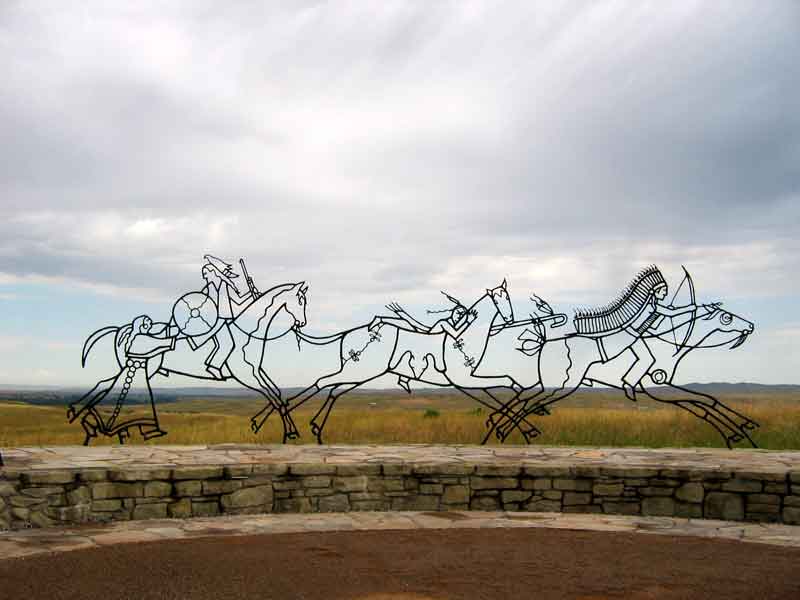
Left: A marker that shows the location of one of the indians killed in the battle.
Right: There is a beautifully done memorial to the indians at the site that contains
this sculpture.















